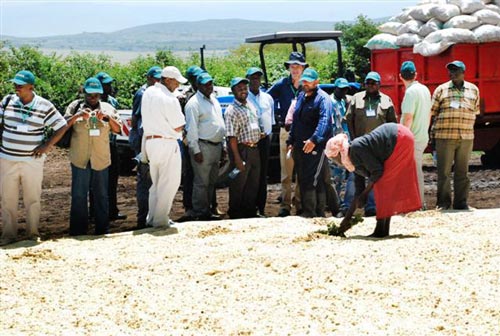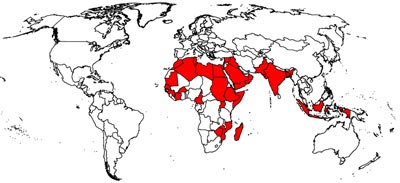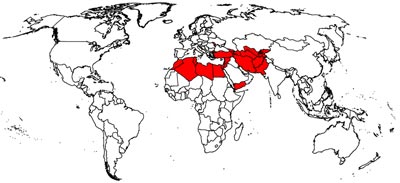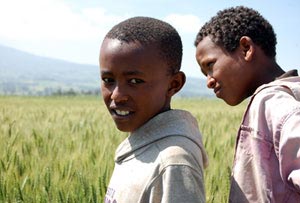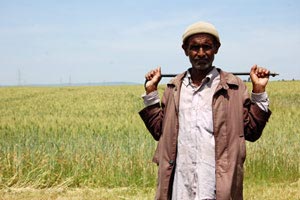Australia and CIMMYT continue support for wheat and maize research in Afghanistan
After a decade of successful work in Afghanistan, CIMMYT has begun a new phase of a project supported by the Australian Agency for International Development (AusAID) and the Australian Centre for International Agricultural Research (ACIAR). The four-year phase entitled “Sustainable Wheat & Maize Production in Afghanistan” began in October 2012 and builds upon research and development and capacity building activities of the previous phases with a greater emphasis on rainfed wheat and hybrid maize.
The livelihoods of approximately 80% of the Afghan population depend on agriculture and related activities. The central crop in Afghanistan is wheat, providing about 60% of daily calorie intake for an average Afghan. Afghanistan’s annual per capita wheat consumption of 180 kilograms places the country among the top wheat consumers worldwide. While wheat constitutes the most important grain crop in Afghanistan, occupying about 80% of all cereals area, maize is a grossly underutilized food and feed option in the country. It ranks third in importance as far as area and production are concerned, but the current production levels are low at about 0.3 million tons (a considerable decrease from about 0.7 million tons in the 1960s and 1970s). This is expected to change with the Government of Afghanistan’s recently renewed emphasis on maize. CIMMYT, with support from AusAID and ACIAR, has been working towards sustainable growth in wheat and maize production and productivity in the war-torn country.
Agriculture in Afghanistan generally faces various constraints and challenges, including severe droughts and great agro-climatic diversity. However, following a decade of concerted efforts on part of researchers, seed producers, and the farming community, wheat production and productivity is now showing a positive trend. Furthermore, the 10 wheat and 4 maize CIMMYT genotypes that were released in Afghanistan in the past 10 years have contributed to the growth of a public-private partnership within the seed industry, which is expected to produce up to 12% of Afghanistan’s wheat certified demand. Nevertheless, serious issues remain, including the absence of an in-country wheat breeding program and the stark fact that more than 80% of certified seed produced in the country is still Ug99 susceptible. There is also a need to initiate agro-climatic zonespecific varietal testing and to reach out to farmers with zone-specific crop management knowledge.
These are some of the issues to be addressed by the new phase of the project. Additionally, the project will create information management hubs in the provinces of Nangarhar, Herat, Balkh, and Kabul. These hubs, led by the Agricultural Research Institute of Afghanistan (ARIA) and engaging all stakeholders and partners, will undertake baseline and subsequent annual surveys to assess levels of technology adoption. They will also study factors affecting adoption, including the role of children and women in wheat- and maize-based cropping systems, and engage in technology assessment, demonstration, and dissemination.
The current phase aims to empower ARIA to assume a leadership role in all the spheres of technology development and dissemination. To realize this plan, annual workshops will be held to eventually hand over the leadership and coordination role to ARIA and national partners. Implementation of this project in Afghanistan will draw support from in-country partners including, but not limited to, ICARDA-Afghanistan, FAO, the French Agricultural Cooperation, Japan International Cooperation Agency in Kabul, NGOs, seed organizations, farmers, and private sector to ensure sustainable gains.
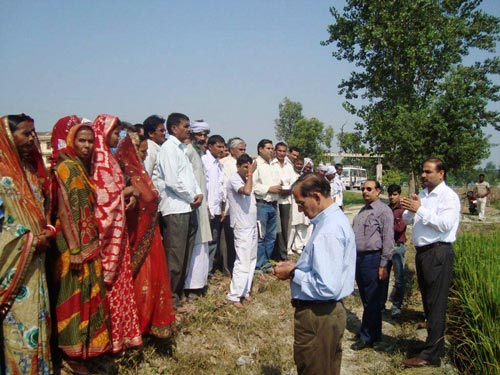 Under the aegis of Climate Change, Agriculture and Food Security (CCAFS), CIMMYT, Rajendra Agricultural University (
Under the aegis of Climate Change, Agriculture and Food Security (CCAFS), CIMMYT, Rajendra Agricultural University (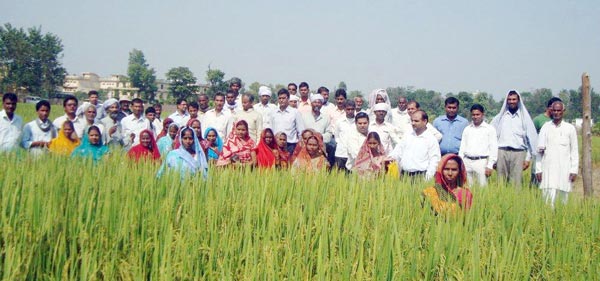
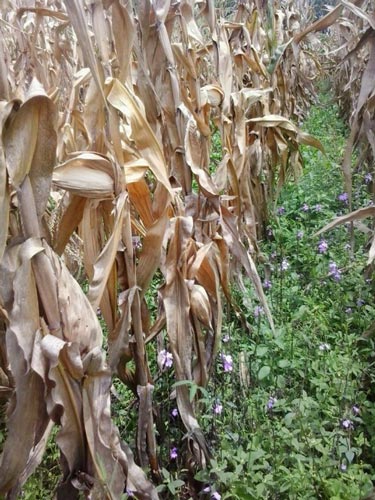
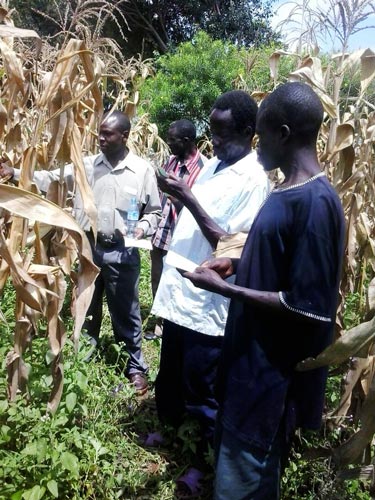 The field day was attended by James Ogwang, director of National Crops Resources Research Institute (NaCRRI) at Namulonge; Godfrey Asea, maize breeder and head of the Cereals Program; Pearl and NASECO seed companies representatives; Sammy Waruingi from BASF; and CIMMYT maize breeder Dan Makumbi and research assistant Edna Mageto. Ogwang urged the farmers to plant only certified seed and move beyond border issues to work together in Striga management. Asea thanked the government and farmers for their support in the fight against Striga. He said the farmers had become good project ambassadors.
The field day was attended by James Ogwang, director of National Crops Resources Research Institute (NaCRRI) at Namulonge; Godfrey Asea, maize breeder and head of the Cereals Program; Pearl and NASECO seed companies representatives; Sammy Waruingi from BASF; and CIMMYT maize breeder Dan Makumbi and research assistant Edna Mageto. Ogwang urged the farmers to plant only certified seed and move beyond border issues to work together in Striga management. Asea thanked the government and farmers for their support in the fight against Striga. He said the farmers had become good project ambassadors.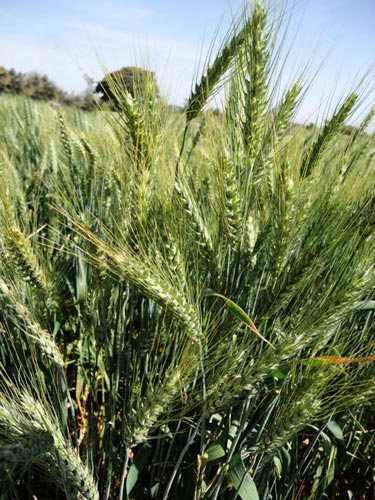 Wheat is increasingly in demand in sub-Saharan Africa as a result of income growth and the demand for convenience foods as more women enter the workplace, but sub-Saharan countries and Africa as a whole produce only about 30% and 40%, respectively, of their domestic requirements, causing a heavy dependence on imports and making the region highly vulnerable to global market and supply shocks.
Wheat is increasingly in demand in sub-Saharan Africa as a result of income growth and the demand for convenience foods as more women enter the workplace, but sub-Saharan countries and Africa as a whole produce only about 30% and 40%, respectively, of their domestic requirements, causing a heavy dependence on imports and making the region highly vulnerable to global market and supply shocks.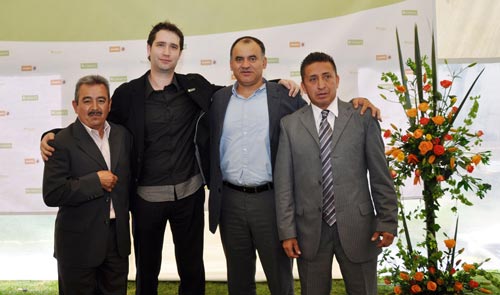 After 12 months of work and dedication, on 19 October 2012 technicians from different parts of Mexico were recognized for their efforts in an August graduation ceremony for the “Technicians Certified in Conservation Agriculture” course. The 48 graduates constitute the third generation of specialists trained to provide technical advice and assistance to new farmers as part of the “Take it to the Farmer” initiative of the Sustainable Modernization of Traditional Agriculture (
After 12 months of work and dedication, on 19 October 2012 technicians from different parts of Mexico were recognized for their efforts in an August graduation ceremony for the “Technicians Certified in Conservation Agriculture” course. The 48 graduates constitute the third generation of specialists trained to provide technical advice and assistance to new farmers as part of the “Take it to the Farmer” initiative of the Sustainable Modernization of Traditional Agriculture (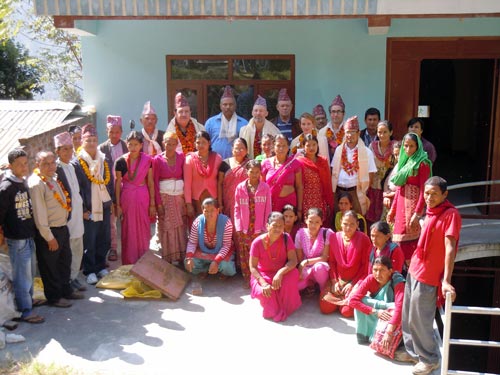 The community based seed production (CBSP) program is one of the most successful interventions of the Hill Maize Research Project (
The community based seed production (CBSP) program is one of the most successful interventions of the Hill Maize Research Project (

 The U.S. Agency for International Development (
The U.S. Agency for International Development ( Thirty-six senior maize breeders from fifteen African countries participated in a course in Nairobi, Kenya, from 1 to 4 October 2012. The course attracted participants from national agricultural research systems, private seed companies, and universities collaborating within the Drought Tolerant Maize for Africa (
Thirty-six senior maize breeders from fifteen African countries participated in a course in Nairobi, Kenya, from 1 to 4 October 2012. The course attracted participants from national agricultural research systems, private seed companies, and universities collaborating within the Drought Tolerant Maize for Africa (
